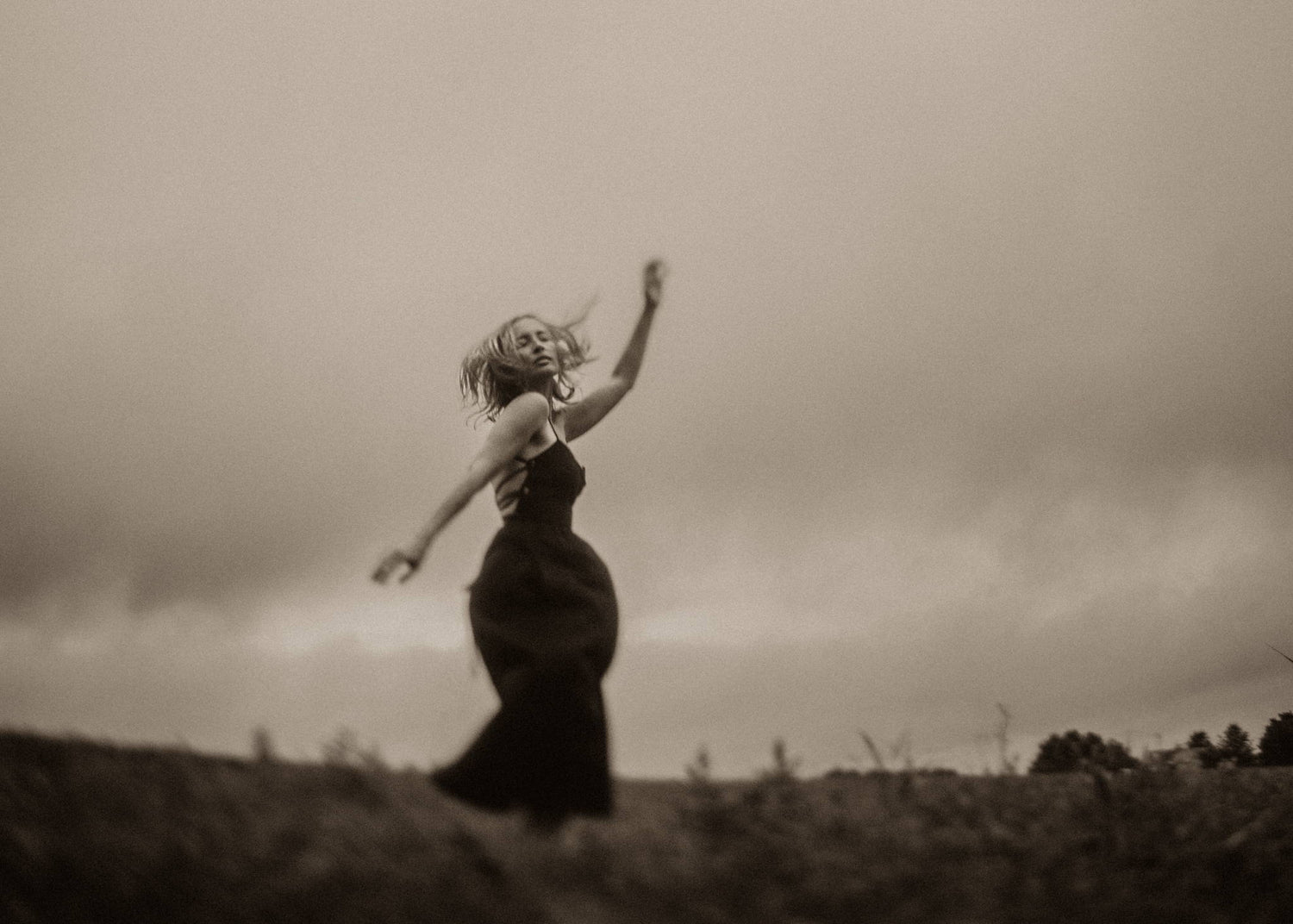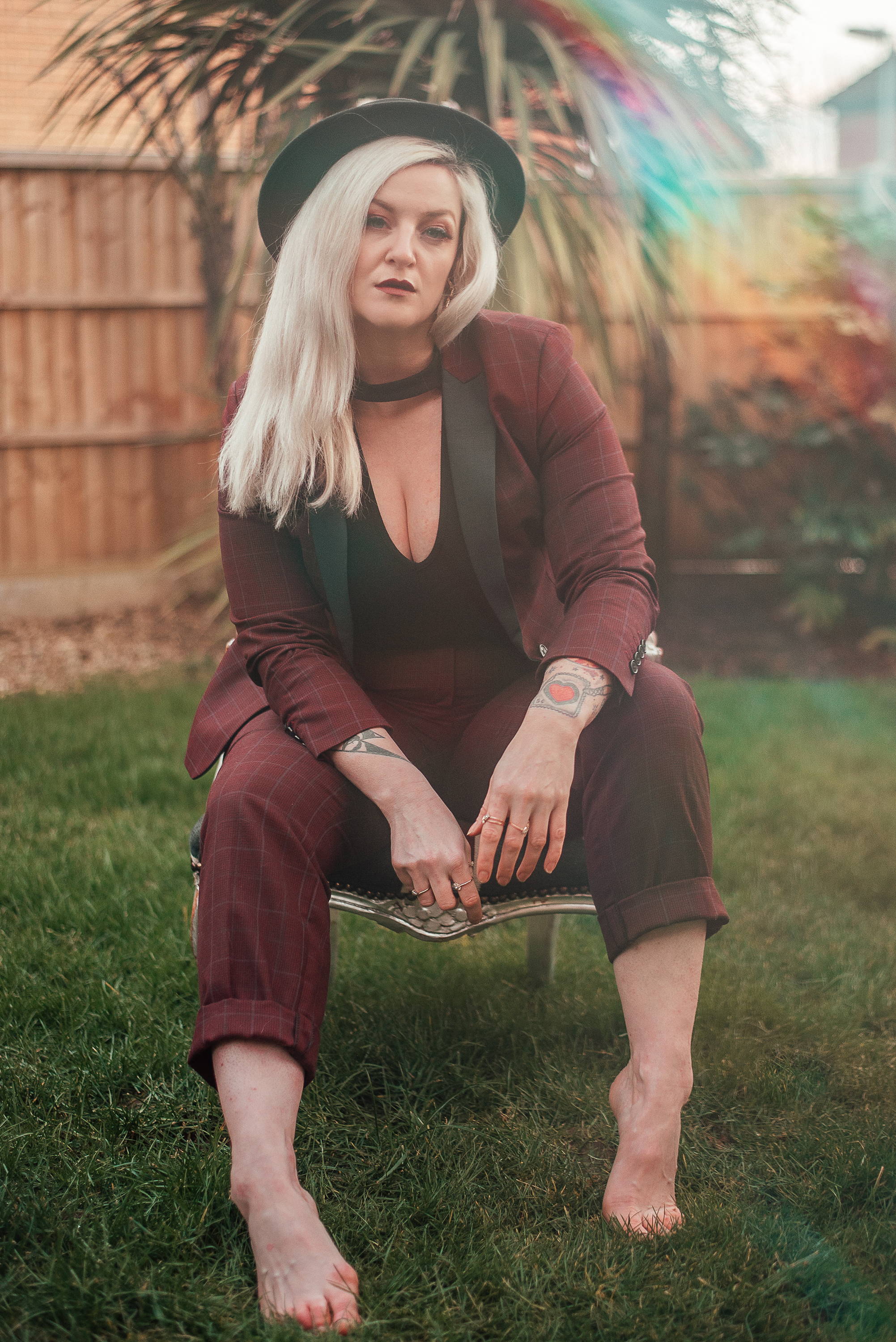How to Pose Women for Maximum Effect When Using the Edge 35
I'm not a traditionalist. I'm not here to espouse the virtues of an 85mm lens over a 35mm. I'm not going to tell you that you need a certain camera body or lighting setup. And I'm not going to advocate for the adoption of definitive camera settings.
It's all bunk. Plus, you're currently reading a Lensbaby blog, so it looks like you're ready to color outside the lines a bit anyway.
That being said, using a creative lens for portrait photography has its own considerations.
Think About the Intent of the Portrait
Every click of your camera is a chance to tell a story, and when done correctly, a portrait should be a tiny snapshot of your subject's life.
Before you even pick up your camera, get to know your subject. Even a short five-minute conversation can decrease pre-shoot anxiety and inform the meaning of your photo.
Also, some women prefer one side of their face over another. This is good information to know before the photo session.
Figure Out What's Important
What's the gist of the photo session? Are you a portrait photographer who'll be taking a family's photos and need to emphasize their connection? Are you taking a professional headshot, and it's a serious portrait photo? Or are you working within the fashion industry and need shots that highlight the fabulous clothing design? Each gig comes with different expectations and factors to accentuate.
Examine the Background
The background of your portrait is an essential part of the image. It helps provide the viewer with a sense of place. But unless it adds to the subject's story, avoid busy and distracting backgrounds.
Plan for the Blur
Blur is the expectation when using a Lensbaby lens, and it's the main reason I attach one to my camera. The Lensbaby Edge 35, used in this portrait series, creates a slice of focus and a blurred edge. Knowing that you have to decide what section of your subject you want sharp and what portion you want to be out of focus.
"Before you even pick up your camera, get to know your subject. Even a short five-minute conversation can decrease pre-shoot anxiety and inform the meaning of your photo."
Where Should the Viewer Look?
The human eye naturally targets fragments of an image that are in focus and brighter than the rest of the shot. Most of the time -- but not always -- a photographer wants to focus on the subject's eye closest to the camera while letting the rest of the image fall into a gentle blur.
To accomplish this with the Edge, you'll need to tilt the lens and adjust the manual focus until the eye becomes sharp. On either side of that slice of focus, the lens will blur the image and draw the viewer's attention to the focal point.
Give Yourself Permission to Experiment
Explore ways that blur can add to your story. I always pull out my Lensbaby when I want to boost the sense of mystery and emotion.
Is your subject feeling angry or emotionally lost? Mar the face so that it's unrecognizable. Is she laughing hysterically, and you want her overjoyed smile to be the show's star? Just forget about focusing on the eyes.
Play. Have fun. There are no right or wrong answers.
Pose Your Subject to Elongate Limbs
Because the Edge blurs the margins of an image, portrait poses that lengthen limbs look graceful and painterly. If you pose your subject so that their arms and/or legs leave the frame of focus, the blur extends the limb several extra pixels and gives the effect of a watercolor brushstroke.
To lengthen the limbs of a female subject in the camera, you'll want her arms and legs to be slightly bent. Instruct her to extend her hands and fingers softly so they are curved and slightly apart. Have her stretch out her legs to a delicately pointed toe.
Work with the Available Light
The best light to use for a great portrait is the light you have available. Truth. The end.
Most portrait photographers prefer soft, diffused light when shooting subjects because it forgives the skin. However, if we all shot with the same lighting setup, the digital photography world would be boring.
So be adventurous and find the light that you love.
Although I primarily use natural light in my client work, I've created some very cool imagery using candles, lamps, headlights, and strobes. You can use it to illuminate your portrait if it generates or reflects light.
Portrait Photography Poses 101
Whether you're using a creative lens or something more traditional, some tricks work at any time.
- Create a gap between her arms and her body. Have your subject bend her arm slightly and pull her arm away from her body. This will create a negative space between her waist and her arm.
- Accentuate curves. If she doesn't have curves, create them by having your subject stand angled about 45 degrees from the camera. Have her put her weight on her back foot and bend the other knee away from the camera.
- Pay attention to the mouth. Dare I say. It speaks volumes. Unless the goal of the portrait is anger or contempt, stay away from tight, closed lips and opt for a soft, open mouth.
- Avoid poses that showcase her palms or the back of her hands, especially near the face.
- Chisel the jawline with the turtle technique. Tell your subject to stick her neck like a turtle and lower her head slightly. Assure her that while it does feel unnatural, it looks great in a photo.
The subject of this series, Anne Thorne, is a Kansas City-based floral designer that specializes in weddings, events, and workshops. She's always deeply loved nature, specifically flowers, and loves to help other people see and freshly appreciate them. Her style is playful and organic, and she loves adding other natural elements to her work, like nests, butterflies, wood, and rocks. She gravitates toward wearables in her work and is always trying to figure out another way to cover someone in flowers.
Want your shots featured by Lensbaby?
Be bold and shoot extraordinary! Make sure to tag your photos on IG with #Lensbaby, #ShootExtraordinary, and let us know what gear you’re using. 📸




Leave a comment
All comments are moderated before being published.
This site is protected by hCaptcha and the hCaptcha Privacy Policy and Terms of Service apply.